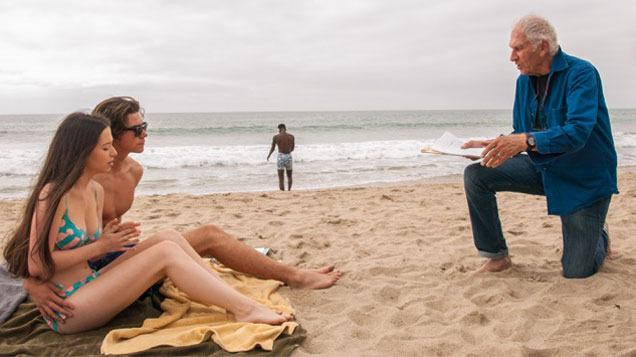Director, producer, writer Terry Sanders is a two-time Oscar winner who has produced and/or directed more than 70 award-winning dramatic features, theatrical documentaries, television specials and a large body of portrait films of major American artists, writers and musicians.
Moviemaker Magazine – Director Shares How He’s Sustained a 63-Year Moviemaking Career
Talkhouse.com – What I learned Working on The Night of the Hunter
Sanders was born in New York City and moved with his mother and stepfather to Southern California when he was 11. He graduated high school from Cate School in Carpinteria, California.
Sanders’ spent his freshman college year at California Institute of Technology where Linus Pauling was his chemistry professor. The following year he transferred to UCLA Film School where he produced and photographed the Oscar-winning dramatic short story film, “A Time Out of War,” the first student film to win a real Oscar.
Sanders first professional job after graduating UCLA was directing the second unit of “Night of the Hunter” for Charles Laughton. Later he adapted “The Day Lincoln Was Shot” for CBS-TV and co-wrote the screenplay of “The Naked and the Dead” for Warner Bros.
Sanders produced and co-directed with his brother Denis the independent features “Crime and Punishment, USA” starring George Hamilton and the United Artists feature “War Hunt” starring John Saxon which introduced Robert Redford in his first movie role.
After 10 years in the narrative film world, Sanders joined forces with documentary film producer David Wolper and wrote, produced and directed five films including “The Legend of Marilyn Monroe” which was narrated by John Huston.
Sanders then formed his own documentary film company, The Terry Sanders Company, and produced and directed several films for the United States Information Agency including two music films, “Portrait of Zubin Mehta” and “Copland Portrait.”
In 1972, Sanders became a co-founder and associate dean of the Film School of California Institute of the Arts. He taught several filmmaking courses while also directing and producing many films including the National Geographic television specials, “This Britain” and “The New Indians.”
